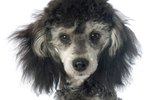If you frequent hunter/jumper shows, you could be forgiven for thinking all Welsh ponies are gray. That's the color that dominates the pony division at such equine events, but gray is not the only shade this elegant, athletic equine wears. You can find a Welsh pony or cob in almost any solid color.
Welsh Ponies and Cobs
The Welsh pony originated in the mountains of Wales, a tough environment that produced a tough but versatile equine. Today, Welsh ponies and their larger relatives, cobs, are divided by national registries into four sections. Section A, the Welsh mountain pony, can't exceed 12.2 hands in height. Section B can't exceed 14 hands. Section C is the Welsh pony type of cob, a larger-boned animal not exceeding 13.2 hands. The Section D Welsh Cob is taller than 13.2 hands up to 14.2 hands. No matter the breed, any equine over 14.2 hands is considered a horse.
Colors
Besides gray, you'll find Welsh ponies in most conventional equine shades. They include black; chestnut, consisting of various reddish hues from liver to bright red; bay, a brown body with black points on legs, tail, mane and ears; and roan, or white hairs mixed into a darker base. Less common cream and palomino Welsh ponies exist, as do buckskins.
Forbidden Colors
Welsh ponies can't be paints, either piebald or skewbald. Piebald is a horse with areas of white on a black base coat; a skewbald has areas of white on any other color of base coat. They also can't be appaloosa, which has various small spots on the coat. If anyone tries to pass off a pony with these colors, it's not a registered Welsh, although it could be a crossbreeed. You might also find a Welsh pony advertised as "dun." That's technically not a Welsh pony color, although some people used the terms dun and buckskin interchangeably. True duns have dark points and a dorsal stripe running down the back to the tail.
Genetics
If you plan to breed Welsh ponies, you should know basic color genetics -- especially if you want a foal of a particular color. In all equine genetics, only two base colors exist: chestnut and black. Any variations on those base colors result from gene modification. Chestnut is recessive and black is dominant. If you breed a chestnut to a chestnut, you can expect a chestnut foal. If you breed a bay, which might carry a chestnut gene, to another bay carrying a chestnut gene, your odds of a chestnut foal are only 25 percent and a bay foal 75 percent. Bays have an "agouti" gene, which restricts black coloring to points only. All of those gray Welsh ponies aren't born gray. Many are born another color. Gray genes cause hair depigmentation. If a Welsh foal is born another color but with white hairs around his eyes, odds are in a short time he'll be another gray Welsh pony.
References
- Welsh Pony and Cob Society: One Breed -- Four Sections
- Oklahoma State University: Welsh Pony and Cob
- Welsh Pony and Cob Society of Canada: Breed Description
- Welsh Pony and Cob Society of Australia: Basic Colours and Genetics in Welsh Ponies
- University of California Davis Veterinary Genetics Laboratory: Equine Coat Color Tests
- Welsh Pony and Cob Society of Australia: Cream Dilution
Writer Bio
Jane Meggitt has been a writer for more than 20 years. In addition to reporting for a major newspaper chain, she has been published in "Horse News," "Suburban Classic," "Hoof Beats," "Equine Journal" and other publications. She has a Bachelor of Arts in English from New York University and an Associate of Arts from the American Academy of Dramatics Arts, New York City.





